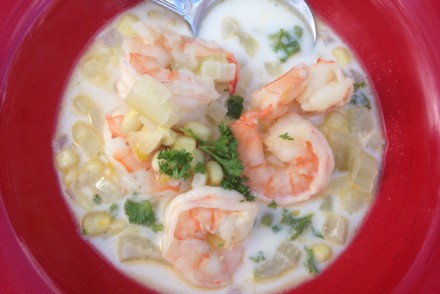It’s on.
This is the summer that my children, ages 13, 11 and 8, WILL learn to cook.
Yes, I should have done this before now. But like most busy moms, I’ve been more focused on slapping dinner on the table than about explaining how it got there.
I realize that my kids are only getting older, and one day soon they’re going to need to scramble their own eggs. And that, as you know, is not as easy as it sounds. The one thing that cooking requires, more than natural talent or creativity, is practice. And unless I invite them in to make some messes and slow me down, they will never learn.
I don’t have any hard data on the subject, but I’m willing to bet that young people know less today about the fundamentals of cooking than ever before, despite the collective rise in food knowledge nationwide. We learn about what to eat from food blogs and network television, but we’re also sprinting through life, often opting for eating out or dining at home with prepared foods. By the time kids leave the house for college or whatever comes next, will they be able to make themselves a decent meal? It’s a super important skill. Life is a lot easier if you have it.
So, this week, as the time we normally spent on homework was suddenly available, our project began. Here’s how the first lesson went.
Remoulade Sauce
The day before, my husband had grilled beautiful Gulf shrimp that I’d picked up from the Red Stick Farmers Market. With more than a dozen leftover, it seemed like the perfect time to make remoulade, the tangy condiment found in Creole cooking and throughout France and other European countries. Instead of doing it myself, I handed the recipe over to my 13-year-old daughter Marien.
A cold sauce was a great place to start with our summer project. It was straightforward and didn’t require actual cooking, but it gave us a chance to chat about a multitude of kitchen tips. It’s not until you execute a recipe with a young person that you realize how many things they’ve yet to learn. Cooking seems obvious to adults who enjoy it, but it isn’t. Look what came up just from this simple recipe:
• Safety, including the importance of placing a dishtowel under a cutting board so it doesn’t slide
• Basic knife skills, including how to chop an onion, celery, green onions, and how to mince garlic
• What the heck is remoulade and what else can you eat it with besides shrimp? (chicken or crabmeat)
• What’s a good substitute for fresh parsley since ours was spent and I wasn’t driving to the store (for this recipe, fresh chives)
• How much juice can you extract from of a lemon half? (1 tablespoon)
• How many tablespoons are in a quarter-cup? (3)
• The importance of reading a recipe all the way through
• Mise-en-place, measuring out the ingredients first and placing them in order of use
The remoulade called for 14 ingredients run through the food processor for about 30 seconds. It was simple, fragrant and tasty.
One final residual benefit: If I’d made the remoulade and served it drizzled atop her chicken breast, Marien probably would have balked.
But since she made it, guess what?
She liked it.
While many Louisiana remoulades are more red in color, our oil-based one used lots of mustard. We loved its tang.







No Comments